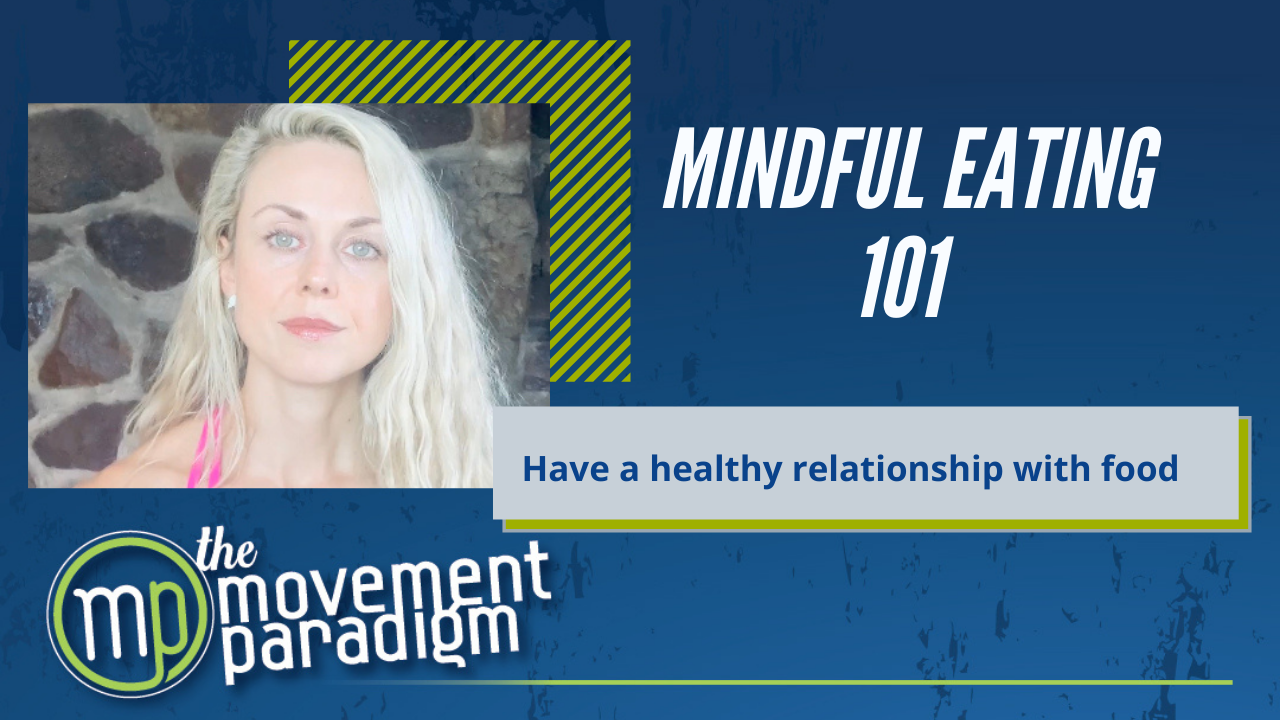Did you ever wonder how mindful eating can help you have a healthier relationship with food?
The first step in having a healthier relationship with food is really to begin to change your perspective about food.
Food is amazing. It is a connection, it is a way to bring people, families, and cultures together. If we think of it from the perspective of medicine; food is medicine. It can be healing in so many ways. Not only can help with most chronic and autoimmune diseases, but it can also be preventative for the majority of lifestyle-related diseases.
Food is also information. This is so important! Food is constantly giving us information, it’s just whether or not we decide we want to listen to it or not. It gives us information about how it affects our energy levels, it may or may not contribute to digestive issues or even aches and pains in our body. Once again, we just have to listen to it and explore it.
Food is powerful. When we think of it as this powerful gift that we have in our lives that not only allows us to survive in this world but to thrive; it seems that we can be more present in our eating and improve our relationship with food.
How do you practice mindful eating?
When you sit down to eat your meal, be aware of what’s happening in your body. Are you actually hungry, or are you full, bored, stressed, or even sad? Take inventory of what’s happening and a pause to tune in to see why you’re eating. Then, aim to eliminate all distractions. Try to clear your environment and make sure there’s no TV or phone. Try to limit all distractions so that you can be present with your meal, be in tune with the process of eating.
Next, you want to think of non-judgment, one of the pillars of mindfulness. We tend, as humans, to judge ourselves and other people especially as it relates to food. We tend to have a lot of rules and rigidity about what’s good and what’s not good.
So, take that moment to pause and allow yourself to be present, to be still, and to think about the food that you are putting in your mouth. Free yourself of all the rules and allow yourself to experience the process of eating.
Now, try to use your senses to experience the process of eating.
What do you see, hear, feel, smell, and taste? Let’s say that you are going to have an apple. You can start by observing the apple. What shape is it? How about the color? What texture is it? You can even smell it. Smell it before and maybe after you take a bite of it. After you take a bite of it, chew the food thoroughly, 20 to 30 times. The digestive enzymes in the saliva allow for the start of a healthy digestive process.
Actually taste the food in your mouth and assess all the flavors. Then as it goes down the esophagus into the stomach, try to sense what’s happening. How does that feel as it moves through your body, what does it feel like after you chew the food entirely? Assess your experience. It can be such a beautiful experience because it can shift your perspective on how you look at food.
If we did this all the time, none of us would eat too much. We also wouldn’t eat foods that don’t make us feel good because we’re really in tune and completely present in the moment with our eating.
Try to introduce mindful eating into your life.
It’s a way to begin practicing mindfulness. It is a way to begin to have a healthier relationship with food. It is a way to eat what your body is signaling you need to eat, as opposed to just eating because you’re stressed or bored and using emotional triggers as a driver. There are so many benefits to this. I encourage you to explore it and see how it is for you and how you can introduce more of it into your life.
Reach out for a 15-minute FREE discovery session to see how we can help you on your journey.
For more content, make sure to subscribe to our YouTube channel here.
Other things that may interest you:
Chew Your Food To Heal Your Gut
What do your gut bacteria do? | 10 Functions of Gut Bacteria | Microbiome

